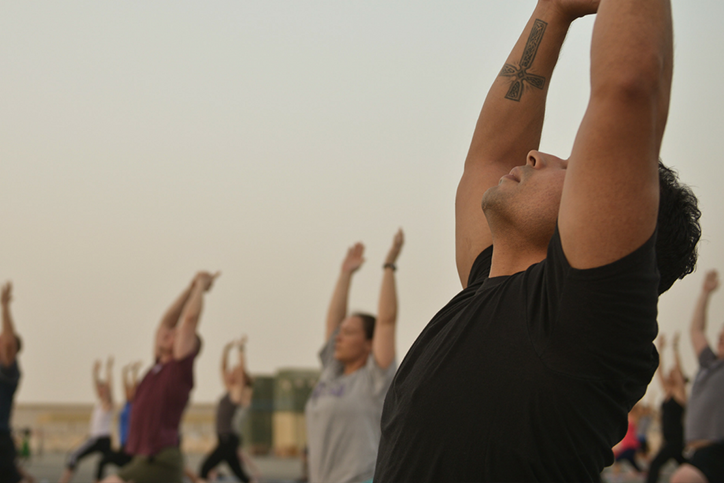Yoga Day is an opportunity for folks to stretch their limits in gyms and studios around the globe. And that’s a good thing, given that research indicates yoga can help reduce inflammation—which plays a part in conditions such as arthritis and cardiovascular disease—up to 41%. However if you are new to yoga, choosing a class can seem just as overwhelming as an hour-long downward facing dog. And while yoga and yogic philosophy is a rich, varied science that can take many forms—not just physically—we’ve compiled a list of some the most common yoga classes you’ll find at your local gym or studio. So unroll your mat, take a deep breath, and limber up this Yoga Day.

Vinyasa Yoga To Get Your Heart Pumping
Vinyasa is derived from Sanskrit meaning “to place in a special way.” But when talking about modern yoga classes, vinyasa typically refers to a flowing sequence of poses. These poses often link movement and breath—meaning one moves to one pose on an inhale, then flows to the next on an exhale. Poses can range from simple standing postures to complex inversions, twists, and backbends. This continued, vigorous movement increases heart rate and gets you sweating, making vinyasa classes great for those looking to increase cardio strength and stamina. Vinyasa classes might, however, be too intense for those with little to no exercise or yoga experience.

Back To Basics With Hatha Yoga
While hatha yoga traditionally refers to any yoga practice done with physical postures—aka asanas—hatha yoga in modern gyms and studios usually means the class will focus on basic poses. These poses can include downward-facing dog, upward-facing dog, baby cobra, child’s pose, mountain pose, and warrior I & II. Hatha yoga is usually an excellent starting point for anyone who has never done yoga. If you aren’t new to yoga or have an active exercise routine, you might not work up a sweat but still feel relaxed and limber at the end of class—making hatha yoga an excellent active recovery workout to try out for World Yoga Day.

Get In Alignment With Iyengar Yoga
B.K.S. Iyengar was a yoga teacher who brought his style of yoga to many people across cultures in the 20th and 21st centuries. Now his students continue to share his teachings in Iyengar classes around the world. An Iyengar class typically focuses on meticulous alignment in many poses and can rely on props such as blocks, straps, and blankets to ensure that the body remains in the right position as the practitioner holds the pose. This can be especially helpful for those who have physical injuries/restrictions or who are simply new to the physical yoga practice. This doesn’t mean you won’t work up a sweat, though. Iyengar classes often have students hold poses for several breaths—and that consistent isometric activation of the muscles can get your blood flowing and improve strength in no time.

Let It All Go With Restorative Yoga
While the three styles of yoga mentioned above tend to deal with the active holding of postures, restorative yoga is a relaxing way to passively surrender into poses. With the aid of bolsters, blankets, and pillows, restorative yoga practitioners relax into a variety of poses like chest openers, hip openers, and forward bends. Because restorative yoga requires no effort to hold postures, one can spend 5-20 minutes softening into a pose. The result is that muscles often feel more supple and many people feel rejuvenated, as if they’ve just had a refreshing nap. Restorative yoga is a fantastic way to recover from a hard workout and is great for all levels, ages, and abilities. You won’t get a toned body from restorative yoga, but you will feel more flexible while also balancing your hormones and relieving anxiety/depression.
Whichever class you take, it’s always a good idea to practice at your own pace, ask questions if you are confused, and modify any pose to accommodate your physical limitations—which any qualified teacher should be able to help you do. If you want to learn more about yoga, take Health IQ’s featured quizzes on yoga for cardio health, restorative yoga, and comparing different yoga styles. Happy World Yoga Day!